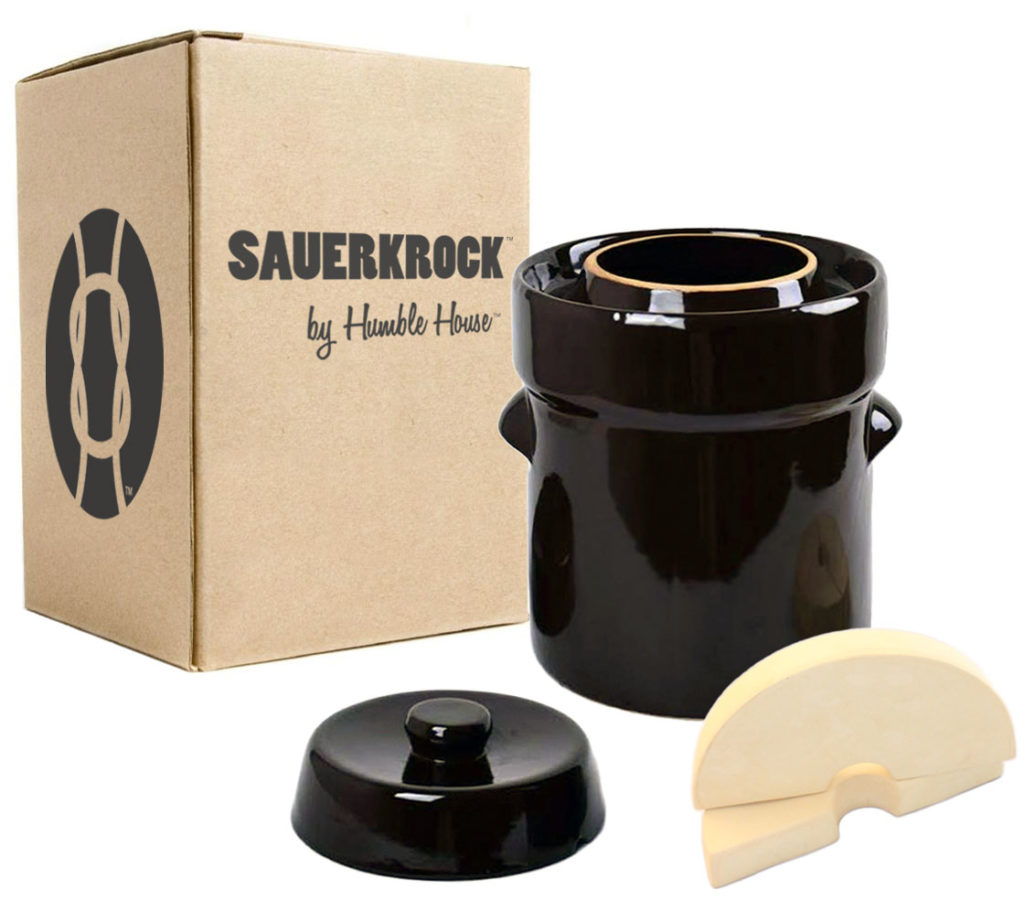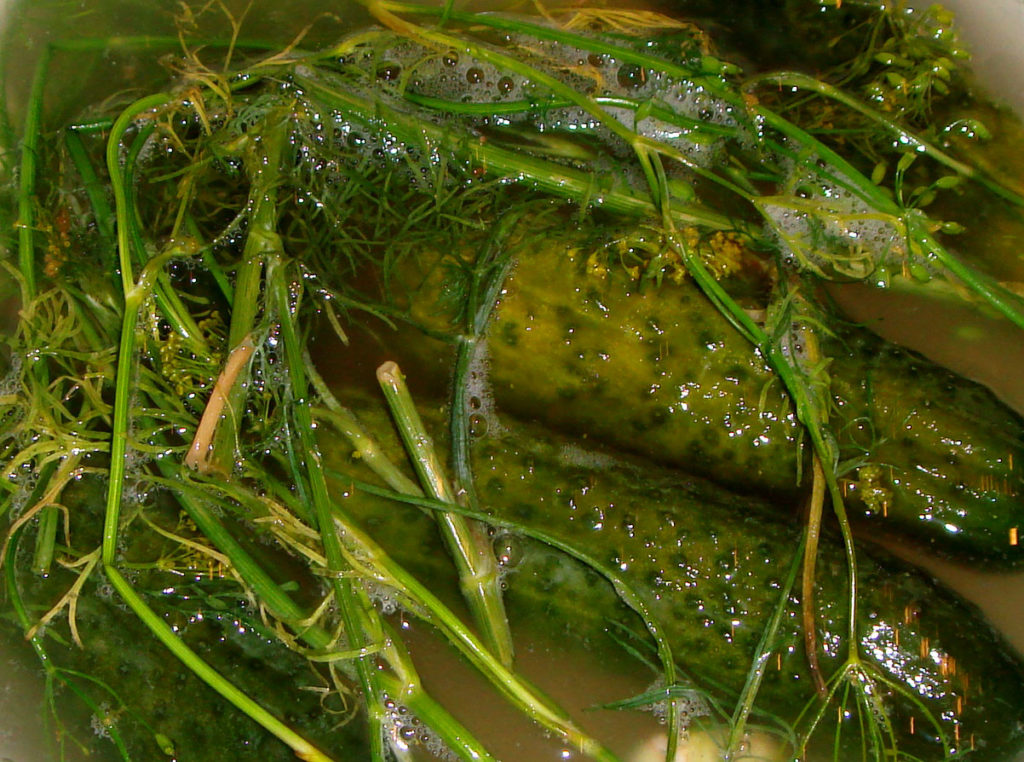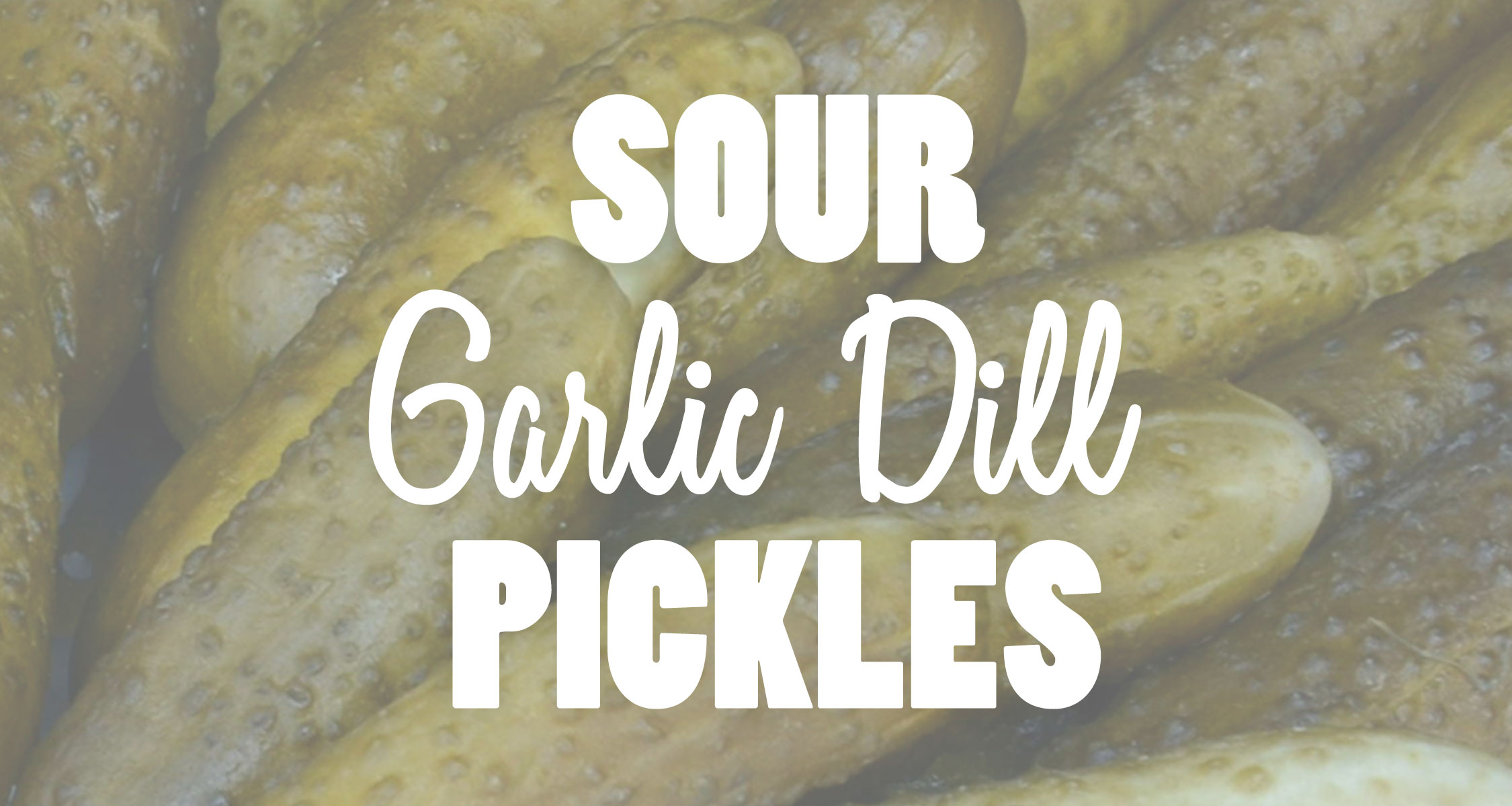
VINEGAR VS. LACTO-FERMENTED PICKLES
Chances are you’ve eaten pickles, or “pickled cucumbers”, before. But do you know what it means for something to be pickled? Pickling is a process that preserves foods in one of two main ways. The most common way (think store bought pickles) is to preserve the cucumbers by immersing them in a vinegar solution. An alternative way is to allow the cucumbers to ferment (or to “sour”) in a salt water brine.
Both of these forms of pickling extend the edible lifespan of the cucumbers by killing off the bad bacteria, so which one is better?
FERMENTING IS BETTER (OF COURSE!)
While it is true that both forms of pickling will safely preserve your cucumbers and impart delicious flavor on them, only fermented pickles provide you with additional nutritional value and health benefits.
When a cucumber is pickled with vinegar, the vinegar not only kills off bad bacteria but the good bacteria as well. Those good bacteria are called lactobacillus and are a probiotics that provides us with a whole host of health benefits including improved digestive health, immunity, and more. When you ferment pickles, not only do you not kill off the good bacteria, but you help it thrive. Lactobacillus feeds off the salt water brine and multiplies, making your finished pickles a veritable super food!

SPECIAL EQUIPMENT
MIXING BOWL: You’ll want a large (4 or 5-quart) glass or stainless steel mixing bowl to dissolve the salt into the water. Stainless steel and glass are non-absorbent materials and will not impart any undesirable flavors into your brine like plastic. We like the largest bowls from this Pyrex set of bowls or this Cuisinart set of bowls. Both are great sets with lids that you will get a lot of general use out of in the kitchen for cooking, backing, and food storage!
FERMENTATION CROCK: We recommend that you use a traditional ceramic fermentation crock, like the SAUERKROCK by Humble House, instead of mason jars for all food fermentation recipes and we have documented the reasons for this in detail in this blog post. The main reason for this is that mason jars and other clear glass vessels allow light and UV rays in which can be harmful to the fermentation process cause damage to your fermenting food.
STORAGE JARS: After the fermented pickles has completed the pickling process, you will need to transfer them over to mason jars for refrigerator storage. We’ve found that wide mouth mason jars make for the easiest transition and best storage solution and recommend either the quart-size like these ones or half-gallon size like these ones. Depending on how many cucumbers you started with and how tightly you compact your pickles, you will need anywhere from 2-3 quart-size jars or 1-2 half-gallon size jars.
REQUIRED INGREDIENTS
Makes 2 Liters of Sour Garlic Dill Pickles
- Sauerkrock “City” = 2 liters (recommended fill is 1.5 liters)
- Sauerkrock “Original” = 5 liters (recommended fill is 4 liters)
- Sauerkrock “Family” = 10 liters (recommended fill is 8 liters)
Ingredient List
- Enough Unwaxed Pickling Cucumbers to Fill a SAUERKROCK halfway
- 2 Quarts of Filtered Water
- 6 Tablespoons Unrefined Mineral-Rich Salt*
- 2-3 Heads of Fresh Dill
- 1 Head of Garlic
- Spices to Taste (Red Pepper Flakes, Whole Black Peppercorns, and Mustard Seeds)
*We do not recommend using standard table salts or kosher salts because they are refined and often contain additives. The best salts we’ve used for making Sauerkraut and other fermented foods are Real Salt brand sea salt and varieties of Pink Himalayan Salt. These salts are natural and unrefined which means they contain no artificial ingredients and maintain all of their original minerals which add to the quality and flavor of your recipe.

INSTRUCTIONS
PREPARE THE INGREDIENTS
Rinse the fresh cucumbers then cut off the “blossoms”, also known as the ends. Peel the garlic cloves and cut off the ends, leaving the cloves otherwise whole. Rinse the dill and cut off any excess stem so just the heads remain. Set the vegetables and herbs aside.
Grab a glass or stainless steel mixing bowl and combine the salt in the water to make your brine. Stir until the salt is completely dissolved.
FILL THE SAUERKROCK
Place all of the vegetables inside of the fermentation crock, ensuring they are fairly level. Add in the herbs and spices. Pour the brine over all of contents until cucumbers are completely covered. Place the weights on top of the contents and lightly press down to further submerge and compact the cucumbers.
FERMENT THE CUCUMBERS
Place the lid on the fermentation crock, fill the water channel, then tuck the crock away in a low-traffic area (like the inside corner of a kitchen countertop) in order to avoid any disturbance during the fermentation process.
Let the pickles sit in the crock at room temperature until they reach your desired taste. This can take anywhere from a few days to several weeks. Don’t forget to check the water channel regularly to ensure enough water remains after evaporation to keep a seal.
CAN, REFRIGERATE, AND ENJOY
When the fermented pickles taste right to you, move them and the brine to quart-size wide mouth mason jars after skimming off any surface mold that grew during fermentation. Next? Refrigerate and enjoy!
Your fermented pickles will continue to develop their flavor even during refrigeration and can last for months thanks to the preserving power of lacto-fermentation.


I am definitely going to try the fermented pickle recipe and thanks so much for sharing it. I have just made pickled corn in my fermenting crock for the first time and it is delicious.
We love sour corn! That’s another great, go-to fermented recipe like sauerkraut since it only takes a handful of ingredients. We’ll have to post a recipe for it on the blog soon!
Would you be kind enough to share your pickled corn recipe?
I have jalapeno peppers I would like to ferment. Could I basically follow this recipe? I purchased the 1 liter crock on Amazon and can’t wait to use it! Two more questions, 1) Does the crock need to be filled to a certain level, or can a smaller quantity be fermented in the crock and
2) Is there no need for whey in order to be a lacto-fermented product?
Thanks for any assistance.
Hi Michele!
Yes, this recipe would work well for fermenting peppers as the brine salinity required for fermenting them is similar to cucumbers. Most vegetables ferment best in a 2% – 3% brine, but cucumbers and peppers have higher water content and are more prone to mold so they are better suited to the 5% brine called for in this recipe.
The Sauerkrock should be filled no more than 3/4 of the way full with your recipe contents. This will allow you to fit the weights in and also gives you enough head space so that any bubbling brine stays inside the crock and doesn’t end up on your countertop!
We do not use whey in our pickles, although some do in order to quicken the fermentation process. The whey can act as an accelerant by providing additional bacteria from the start, but all the bacteria that you need already exists on your vegetables naturally. We like to keep it simple 🙂
I made home made pickles with water and salt, dill , garlic, it said to let sit for 12 hours I did ,when I was putting them in the fridge I noticed that there was bobbles are they still good?
Bubbles are a sign of normal, healthy fermentation and are caused by the release of gases during the fermentation process! No need to worry – enjoy your delicious lacto-fermented pickles!
Would it be possible to slice the cucumbers and ferment pickles that way? Sometimes I let my cucumbers get too big to fit into the small crock, and this would be a good way to use the larger cukes.
Hi Amanda,
You can definitely slice cucumbers different sizes before fermenting. The key thing we suggest at Humble House is that you use Pickling Cucumbers as they are meant to be pickled.
Happy Fermenting!
The Humble House Team
Hi, I just bought a 2L fermenting crock & am planning on using it soon! Quick question — I think I would eat the pickles from a single batch relatively quickly. Is it critical to transfer the pickles to mason jars for storage once they are ready? I’m hoping that I can simply transfer the crock from room temperature into my refrigerator, and simply leave the pickles in the crock for the 3-4 days over which I would be eating them. If you can let me know if that might work, I’d appreciate that! Wouldn’t mind saving a step at the end & not worry about having mason jars just for storage. Thanks so much! Looking forward to using the crock.
Yes, I would love to know the answer to this question too!
Whats the best way to clean mold from the weights. I cleaned them after use with hot water and soap. When I went to use the crock the next time the weights had mold on them. I boiled them for 10 min and washed. They still were stained. Why are the weights not coated?
Is it necessary to cut off the blossom end of the cucumbers before brining? That is always a needed step when making traditional pickles with a vinegar brine.
I love my pickles! I do have a question. When I take a delicious pickle out of the wide mouthed mason jar in the refrigerator the level of the liquid drops below the ends of the remaining pickles. I have been adding water to the jar to keep them fully immersed so they won’t mold. Does this affect the quality of those remaining pickles; does it dilute the brine too much?
Thank you!
I’m going to try this recipe for the holidays.
Definitely going to try this@
Has anyone tried to add jalapeno’s to the pickle recipe to make them a bit hot? Along with the peppercorns? I am getting ready to try my first fermented pickles in my new 5L crock and was looking at making a little bit of hot pickles.
These sound delish and I love the crock! Can’t wait to try it.
I’m trying my first batch of fermented garlic dill pickles. Is it necessary to check the water daily in the crock for scum/fungus? It seems to me it would do more harm than good to continually open the top and breaking the water seal.